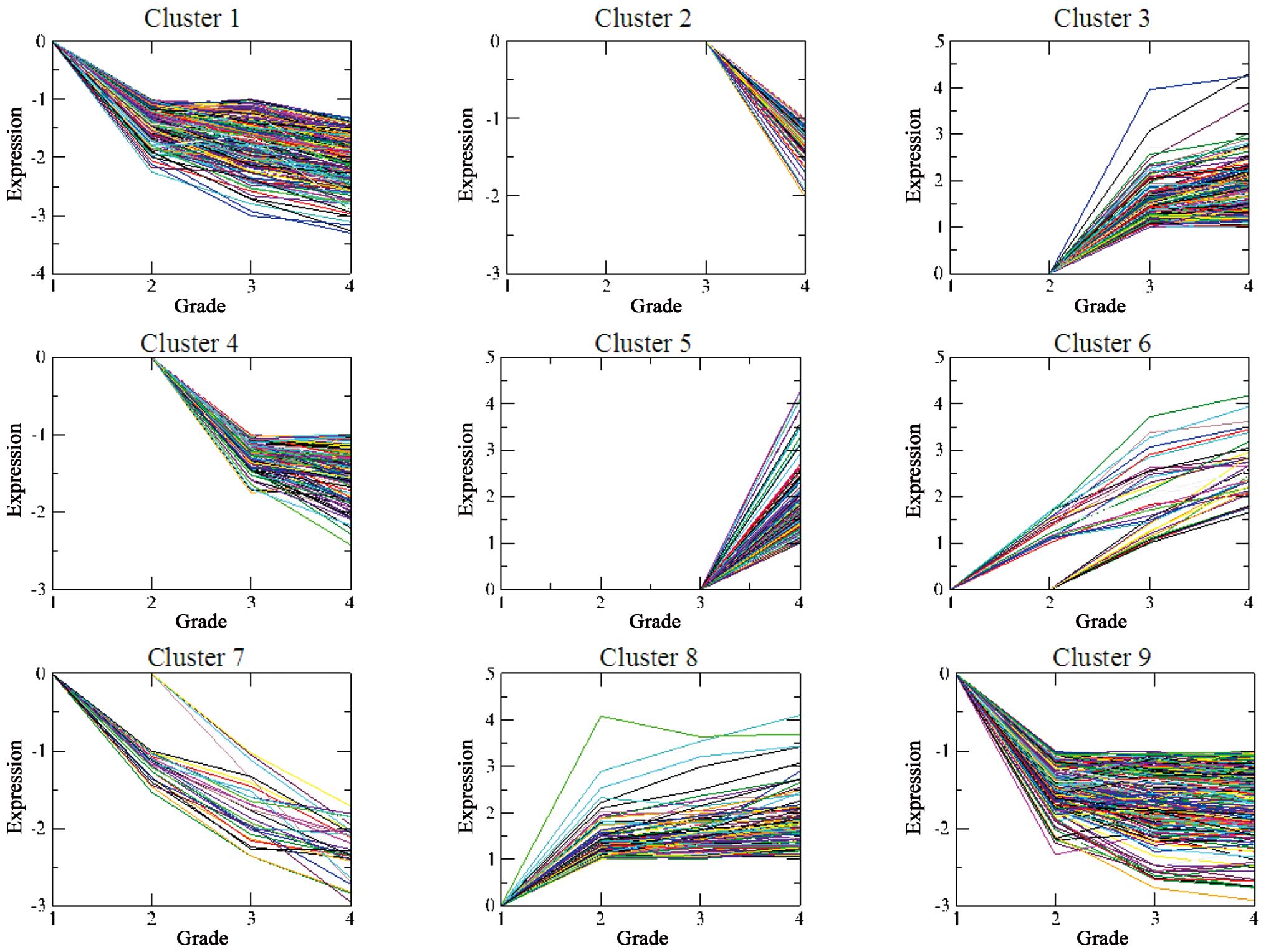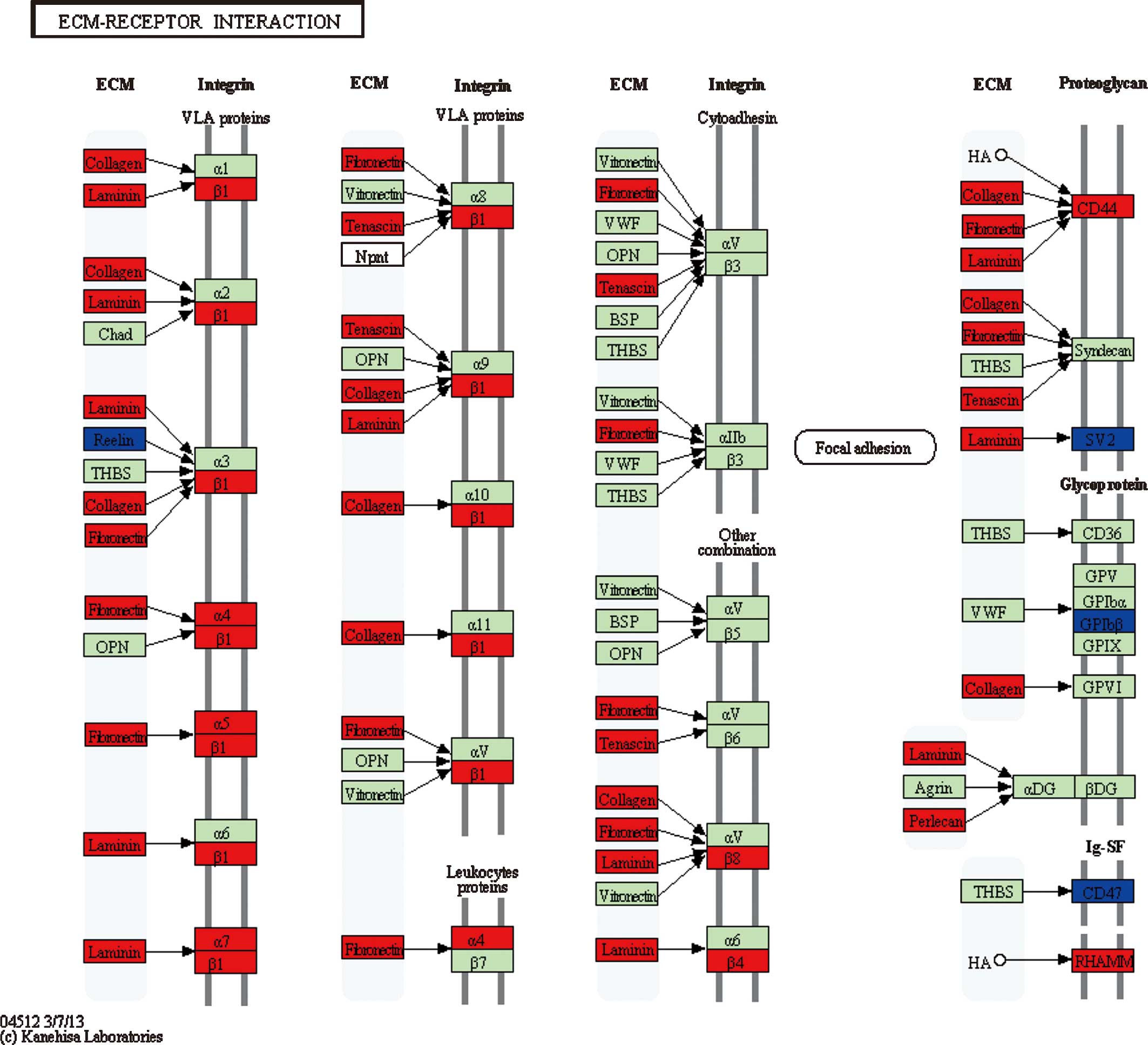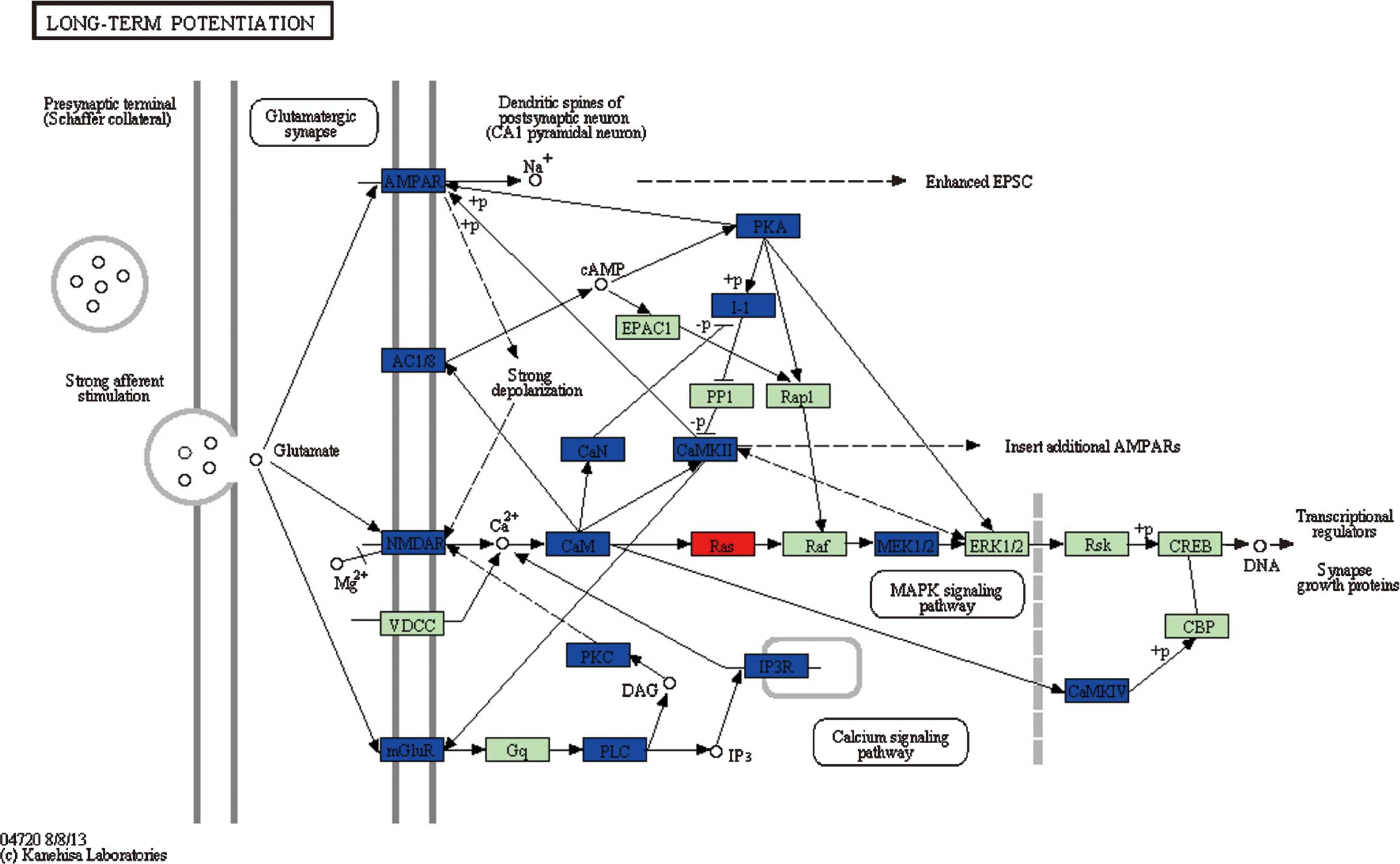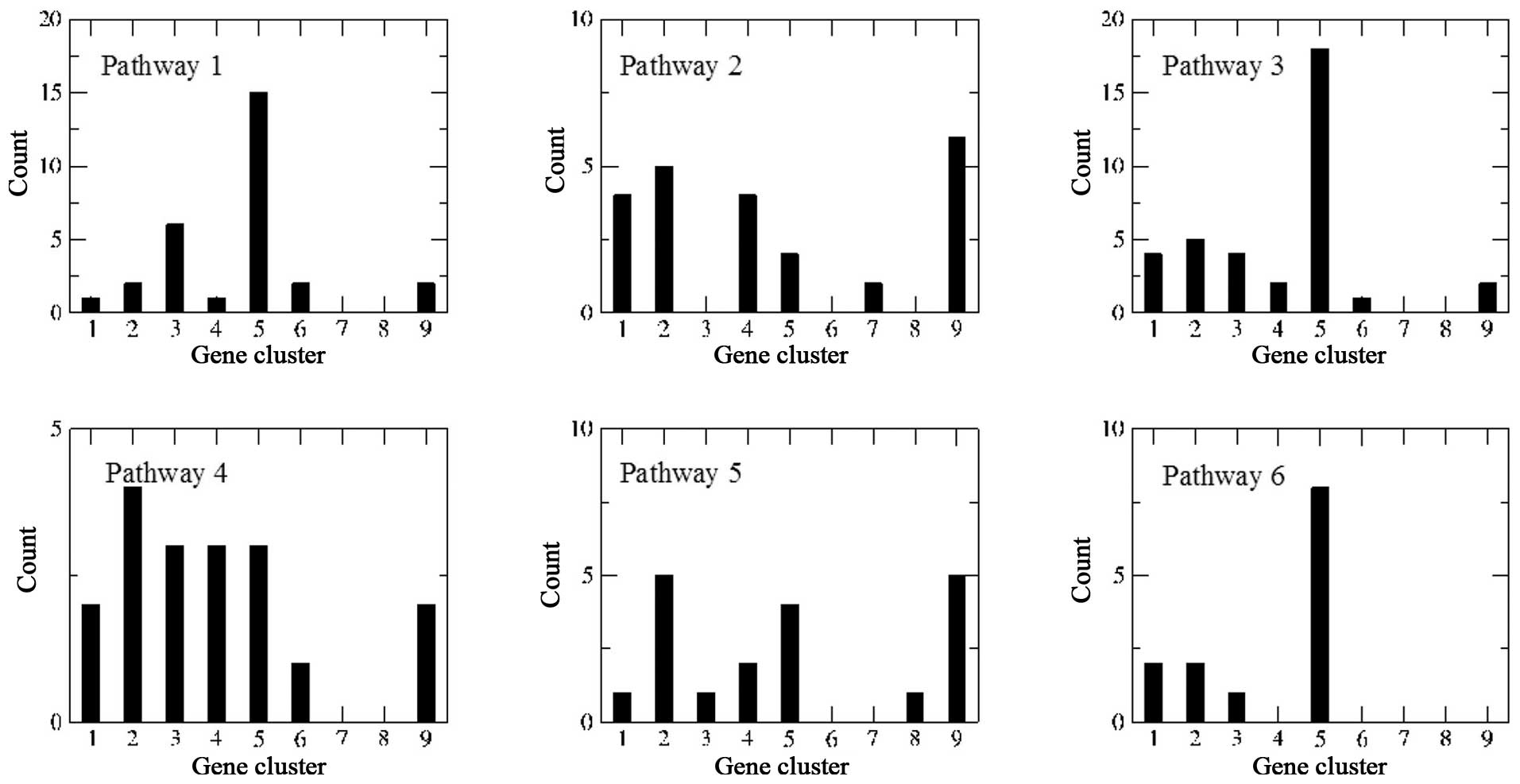|
1
|
Mamelak AN and Jacoby DB: Targeted
delivery of antitumoral therapy to glioma and other malignancies
with synthetic chlorotoxin (TM-601). Expert Opin Drug Deliv.
4:175–186. 2007. View Article : Google Scholar : PubMed/NCBI
|
|
2
|
Goebell E, Paustenbach S, Vaeterlein O, et
al: Low-grade and anaplastic gliomas: differences in architecture
evaluated with diffusion-tensor MR imaging. Radiology. 239:217–222.
2006. View Article : Google Scholar : PubMed/NCBI
|
|
3
|
Fine HA, Dear KB, Loeffler JS, Black PM
and Canellos GP: Meta-analysis of radiation therapy with and
without adjuvant chemotherapy for malignant gliomas in adults.
Cancer. 71:2585–2597. 1993. View Article : Google Scholar : PubMed/NCBI
|
|
4
|
Stark AM, Hugo H, Witzel P, Mihajlovic Z
and Mehdorn HM: Age-related expression of p53, Mdm2, EGFR and Msh2
in glioblastoma multiforme. Zentralbl Neurochir. 64:30–36. 2003.
View Article : Google Scholar : PubMed/NCBI
|
|
5
|
Li J, Yen C, Liaw D, et al: PTEN, a
putative protein tyrosine phosphatase gene mutated in human brain,
breast and prostate cancer. Science. 275:1943–1947. 1997.
View Article : Google Scholar : PubMed/NCBI
|
|
6
|
Simon M, Köster G, Menon AG and Schramm J:
Functional evidence for a role of combined CDKN2A
(p16-p14ARF)/CDKN2B (p15) gene inactivation in malignant gliomas.
Acta Neuropathol. 98:444–452. 1999. View Article : Google Scholar : PubMed/NCBI
|
|
7
|
Freije WA, Castro-Vargas FE, Fang Z, et
al: Gene expression profiling of gliomas strongly predicts
survival. Cancer Res. 64:6503–6510. 2004. View Article : Google Scholar : PubMed/NCBI
|
|
8
|
Shai R, Shi T, Kremen TJ, et al: Gene
expression profiling identifies molecular subtypes of gliomas.
Oncogene. 22:4918–4923. 2003. View Article : Google Scholar : PubMed/NCBI
|
|
9
|
Nutt CL, Mani D, Betensky RA, et al: Gene
expression-based classification of malignant gliomas correlates
better with survival than histological classification. Cancer Res.
63:1602–1607. 2003.PubMed/NCBI
|
|
10
|
Sun L, Hui AM, Su Q, et al: Neuronal and
glioma-derived stem cell factor induces angiogenesis within the
brain. Cancer Cell. 9:287–300. 2006. View Article : Google Scholar : PubMed/NCBI
|
|
11
|
Gruber HE, Ingram JA, Hoelscher GL,
Zinchenko N, Hanley EN Jr and Sun Y: Asporin, a susceptibility gene
in osteoarthritis, is expressed at higher levels in the more
degenerate human inter-vertebral disc. Arthritis Res Ther.
11:R472009. View
Article : Google Scholar
|
|
12
|
Larsson O, Wahlestedt C and Timmons JA:
Considerations when using the significance analysis of microarrays
(SAM) algorithm. BMC Bioinformatics. 6:1292005. View Article : Google Scholar : PubMed/NCBI
|
|
13
|
Ernst J and Bar-Joseph Z: STEM: a tool for
the analysis of short time series gene expression data. BMC
Bioinformatics. 7:1912006. View Article : Google Scholar : PubMed/NCBI
|
|
14
|
Glaab E, Baudot A, Krasnogor N, Schneider
R and Valencia A: EnrichNet: network-based gene set enrichment
analysis. Bioinformatics. 28:i451–i457. 2012. View Article : Google Scholar : PubMed/NCBI
|
|
15
|
Szklarczyk D, Franceschini A, Kuhn M, et
al: The STRING database in 2011: functional interaction networks of
proteins, globally integrated and scored. Nucleic Acids Res.
39(Database Issue): 561–568. 2011. View Article : Google Scholar
|
|
16
|
Paulus W and Tonn JC: Interactions of
glioma cells and extracellular matrix. J Neurooncol. 24:87–91.
1995. View Article : Google Scholar : PubMed/NCBI
|
|
17
|
Payne LS and Huang PH: The pathobiology of
collagens in glioma. Mol Cancer Res. 11:1129–1140. 2013. View Article : Google Scholar : PubMed/NCBI
|
|
18
|
Bajjalieh SM, Peterson K, Shinghal R and
Scheller RH: SV2, a brain synaptic vesicle protein homologous to
bacterial transporters. Science. 257:1271–1273. 1992. View Article : Google Scholar : PubMed/NCBI
|
|
19
|
Dong M, Yeh F, Tepp WH, et al: SV2 is the
protein receptor for botulinum neurotoxin A. Science. 312:592–596.
2006. View Article : Google Scholar : PubMed/NCBI
|
|
20
|
Crèvecoeur J, Foerch P, Doupagne M, et al:
Expression of SV2 isoforms during rodent brain development. BMC
Neurosci. 14:872013. View Article : Google Scholar : PubMed/NCBI
|
|
21
|
de Groot M, Aronica E, Heimans JJ and
Reijneveld JC: Synaptic vesicle protein 2A predicts response to
levetiracetam in patients with glioma. Neurology. 77:532–539. 2011.
View Article : Google Scholar : PubMed/NCBI
|
|
22
|
La Torre D, Maugeri R, Angileri FF, et al:
Human leukocyte antigen frequency in human high-grade gliomas: a
case-control study in Sicily. Neurosurgery. 64:1082–1088. 2009.
View Article : Google Scholar : PubMed/NCBI
|
|
23
|
Guerini FR, Agliardi C, Zanzottera M, et
al: Human leukocyte antigen distribution analysis in North Italian
brain glioma patients: an association with HLA-DRB1*14. J
Neurooncol. 77:213–217. 2006. View Article : Google Scholar
|
|
24
|
Wiendl H, Mitsdoerffer M, Hofmeister V, et
al: A functional role of HLA-G expression in human gliomas: an
alternative strategy of immune escape. J Immunol. 168:4772–4780.
2002. View Article : Google Scholar : PubMed/NCBI
|
|
25
|
Hsieh D, Hsieh A, Stea B and Ellsworth R:
IGFBP2 promotes glioma tumor stem cell expansion and survival.
Biochem Biophys Res Commun. 397:367–372. 2010. View Article : Google Scholar : PubMed/NCBI
|
|
26
|
Otani K, Ujike H, Tanaka Y, et al: The
GABA type A receptor α5 subunit gene is associated with bipolar I
disorder. Neurosci Lett. 381:108–113. 2005. View Article : Google Scholar : PubMed/NCBI
|
|
27
|
Belelli D, Harrison NL, Maguire J,
Macdonald RL, Walker MC and Cope DW: Extrasynaptic GABAA receptors:
form, pharmacology and function. J Neurosci. 29:12757–12763. 2009.
View Article : Google Scholar : PubMed/NCBI
|
|
28
|
Smits A, Jin Z, Elsir T, et al: GABA-A
channel subunit expression in human glioma correlates with tumor
histology and clinical outcome. PLoS One. 7:e370412012. View Article : Google Scholar : PubMed/NCBI
|
|
29
|
Bliss TV and Collingridge GL: A synaptic
model of memory: long-term potentiation in the hippocampus. Nature.
361:31–39. 1993. View
Article : Google Scholar : PubMed/NCBI
|
|
30
|
Dong H, Siu H, Luo L, Fang X, Jin L and
Xiong M: Investigation gene and microRNA expression in
glioblastoma. BMC Genomics. 11(Suppl 3): 162010. View Article : Google Scholar
|
|
31
|
Lu YM, Jia Z, Janus C, et al: Mice lacking
metabotropic glutamate receptor 5 show impaired learning and
reduced CA1 long-term potentiation (LTP) but normal CA3 LTP. J
Neurosci. 17:5196–5205. 1997.PubMed/NCBI
|













